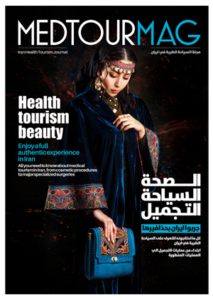Medical Tourism hangs on the edge of the coin of COVID-19 pandemic, one side heralds its destruction, the other its booming prosperity
While certainly the concept and practice of medical tourism goes back to several millennia ago, it became industrialized following the first world war, and ever since it is faced with constant innovations that further facilitate the travel of patients. The latest in line of these is the telemedicine technology. A technology that heralds a prosperous future of medical tourism.
Although telemedicine has been at play in the healthcare systems of many countries for more than a decade, the medical tourism sector has only adopted its properties recently. While it served as a complementary force for pre-travel consultations and minor long distance diagnostics, it did not turn into an integral part of the industry up until the COVID-19 pandemic.
A technology previously regarded as trivial, now has the power to determine the fate of the entire industry. It is widely speculated by the experts that while medical tourism has been more or less shut down, the demands of the patients not only has not died down, but instead has skyrocketed. This has led to the creation of a unique mission for telemedicine; if it successfully keeps the demand for medical tourism alive across online platforms through the pandemic, it has the potential to become a vital and irreplaceable part of the industry in the post-Covid world. Today we will take a general look at the potentials of telemedicine and the future of medical tourism.
Telemedicine as It Is in Medical Tourism
As digital technologies have advanced, the function of telemedicine in the medical tourism industry began to gradually move away from pre-consultation phone calls and emails between physicians and prospective medical tourists and towards full video consultations, with both with patients and physicians being in the home country.
To exemplify, Sri Ramakrishna Hospital in Coimbatore, which is aiming towards making itself the hub of medical tourism in all of southern India, has implemented new tele-diagnostics and tele-radiology programs. This allows international physicians and patients to request virtual diagnoses and second opinions from the safety of their homes, and therefore helping to reduce COVID affliction risk and also reducing costs for those considering travelling for medical care after the pandemic.
The resilience of the medical tourism industry and community has truly been tested by COVID-19
In a world struck by a global pandemic physician to physician telemedicine contact facilitates the most important aspect of the ongoing fight against the pandemic: cooperation, contact and solidarity. This also leads to these physicians having the possibility to enquire about mutual patients and have better chance at giving an improved second opinion.
5G; Enabler of Improved Telemedicine; Savior of Medical Tourism?
The future holds exciting possibilities for medical tourism and telemedicine, one which is the the steady progress of 5G network deployment. This development is bringing new groundbreaking possibilities in the field of remote surgery. Just in October of 2020, the Spanish telecoms company Telefonica showcased a surgery performed at the Quirónsalud Málaga Hospital with live and augmented reality-enhanced assistance from a surgeon at the Osaka Hospital, thousands of miles away in Japan, all made possible by 5G.
While international remote surgical operations will not necessarily appeal to dominant destinations that are looking to persuade more and more patients to travel and spend money in the local economy, there are other new possibilities as 5G continues its global spread; for example, by the creation of diverse clinical centers across a host country which will subsequently gather all of their expertise, and offer remote surgeries from this central operating theatre that is convenient to access for patients from all around the world, and thus centralizing the concept of medical tourism.
Making Health Data Mobile and Accessible
Trust has always been and remains a key issue in medical tourism. While some patients are swayed by the possibility of lower costs or an advanced treatment alone, it is generally considered vital that travelling medical tourists have trust and confidence that the quality of care they will be receiving won’t be of secondary quality. This why the standards that are met by different medical facilities in the world – largely determined by the Joint Commission International – is of central importance to the whole industry.
The sharing of patients’ electronic health records (EHRs) with remote physicians is another way of improving patient confidence and also a core feature of many travel agencies that specialize in medical tourism.
However with the lack of interoperability and connection between the healthcare data systems of different countries, there has been a longstanding issue with sharing EHRs between countries. This is not solely due to technical difficulties, but also because source-country health systems may be reluctant to share the data with international rivals.
This reluctance has its source in the desire of profit, as no American doctor with a clinic of their own would be willing to refer a patient to for example Turkey, when the profit can easily be made for his/her own establishment. Other than technical issues, this lack of will for international cooperation is the only major obstacle that bars medical tourism data, consultation and perhaps even procedures, from becoming a multi-platform, easily accessible online service.
While global EHR cloud sharing is still far on the horizon, cloud-based software services capable of streamlining the process of data-sharing to physicians in different countries have already become operational in a number of countries, predominantly in the European Union.
Especially in combination with modern smartphones, this technology has the potential of making data on treatment across the borders accessible with a few simple clicks. This will largely eradicate false info, and will allow patients to confidently pick and choose their treatments and destinations while also actively combating scams and fake physicians.
Conclusion
The resilience of the medical tourism industry and community has truly been tested by COVID-19, and so far with the help of new technologies and innovative methods it has managed to stay afloat. Through all the aforesaid pre-existing methods, and potential future innovations, telemedicine is primly poised to become integral in the sector and remain as such following the end of the pandemic throughout the future of medical tourism.
Article by: Parsa Khaknezhad







